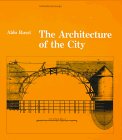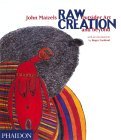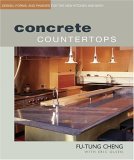ISSN 1753-4607
|
Below are some books we have enjoyed reading. They cover a whole array of topics but generally relate back to design and society in one way or another. You may click on the book covers to purchase a copy from www.amazon.co.uk alternatively visit the <designblip book shop> for other choices and recommendations |
|||
Learning from Las Vegas, Venturi & Scott-Brown. Paying homage to the architecture built out of gambling where buildings become signs. Perhaps the first architecture book to embrace kitsch and tacky as a positive thing. Vegas has since become a staple topic of architecture schools and many authors have continued the work of these two pioneer writers [see also Paul Davies |
|||
Ornament and Crime: Adolf Loos One of the founding thinkers of Modernism. This books takes us through the thought process that rejected Victorian notions of style. The critique is not just limited to architecture, and includes other topics such as gentleman's apparel and the appropriatness of tattoos in modern society. |
|||
Situationist city: Simon Sadler
|
|||
from bauhaus to our house: Tom Wolfe A classic text always listed on the 'first year' architecture student book list. An important book written from 'outside' the trained architectural theory/history canon. |
|||
Key Buildings of the 20th Century, Houses 1900-1914: David Dunster The title gives far too much away. A vital collection of studies documenting the most influential of 20th century buildings. The drawings that accompany the text are vital and large enough to be properly studied. |
|||
The Architecture of the City: Aldo Rossi This text reveals how Aldo Rossi saw certain typologies. He considers the courtyard, the amphitheatre, the adelphi district and various other urban design types that exist as a kind of collective memory. The text is accompanied by beautiful illustrations and photographs. A very persuasive text delivered in the gentlest of ways. |
 |
||
The Death and Life of Great American Cities: Jane Jacobs All about Urban planning and community. |
|||
The condition of postmodernity: David Harvey This book reviews the notion of postmodernism, considering it through a variety of genres and disciplines, such as planning, economics and architecture . Harvey also expands on something he calls, 'space-time compression', an effect of decreasing travel times and increased communication. This book manages to pin down the ellusive 'post modern' into hard social science. A difficult read at times and some would argue it tries to present Modernity as an overly simplistic inverse phenomemon to postmodernity. |
|||
Garden Cities of Tomorrow: Ebenezer Howard Some would consider this text as the birth of modern town planning. The effects of this book can be seen today throughou the UK, espcially in places such as Letchworth, Port Sunlight and other 'garden suburbs'. Its influence even stretched as far as Chandigarh. |
|||
The Image of the City: Kevin Lynch Urban design with particular examples drawn from American cities. Worth reading for the drawings and diagrams alone. See also What Time Is This Place? |
|||
Deschooling Society: Ivan Illich "Education, Education, Education......" _it even looks boring in text format. but it doesn't have to be delivered in its current form. Illich attacks the current systems of forced or compulsary education through various institutions. As educators, we completely agree with him |
|||
Raw Creation: John Maizels A compendium detailing the work of artists from the margins of society. Maizels is the editor of Raw Vision Magazine and this book explains why. He covers everything from the early Prinzhorn discoveries to the latest finds at the Art Brut collection- generating an alternative, often more exciting, history of art |
 |
||
Concrete countertops: Fu-Tung Cheng, Eric Olsen A couple of new books have recently been published on casting concrete work tops[ see Making Concrete Countertops], however this still remains the classic 'how to' manual. It explains how to add pigments, insert holes for services and formwork details such as draining boards. Suppliers are also listed - but are perhaps getting out of date. Well worth reading if you are intending on making your own or advising clients on casting this most brutal of materials. |
 |
||
The Four Books of Architecture: Andrea Palladio The principles of Palladio, succinctly expressed within four essays. |
|||
© 2007 designblip all rights reserved